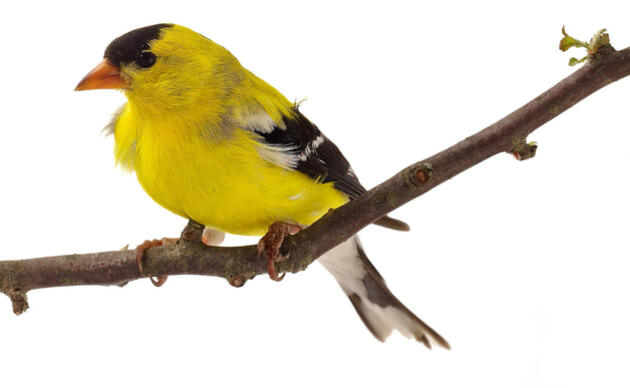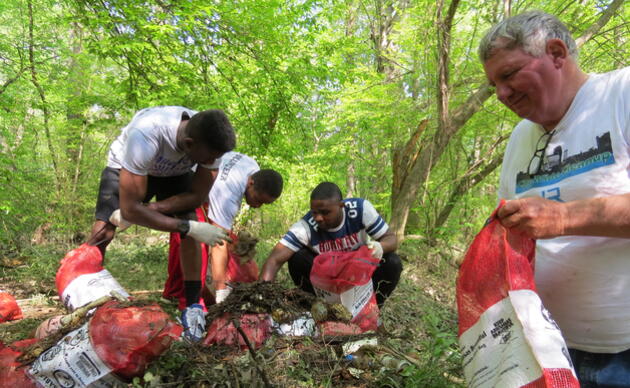By Karen Westphal
On July 13, 2019, Hurricane Barry made landfall in southcentral Louisiana as a Category 1 storm on the east end of Audubon’s Paul J. Rainey Wildlife Sanctuary. Although Barry was a minimal Category 1 storm only for a few hours, it was a slow moving tropical system that affected the region for three days with strong winds, rain and tides. The Rainey Sanctuary is Audubon’s oldest and largest sanctuary, protecting 26,000 acres of coastal wetlands, and we feared storm damage to the habitat and the Sanctuary’s infrastructure from Barry’s impact.
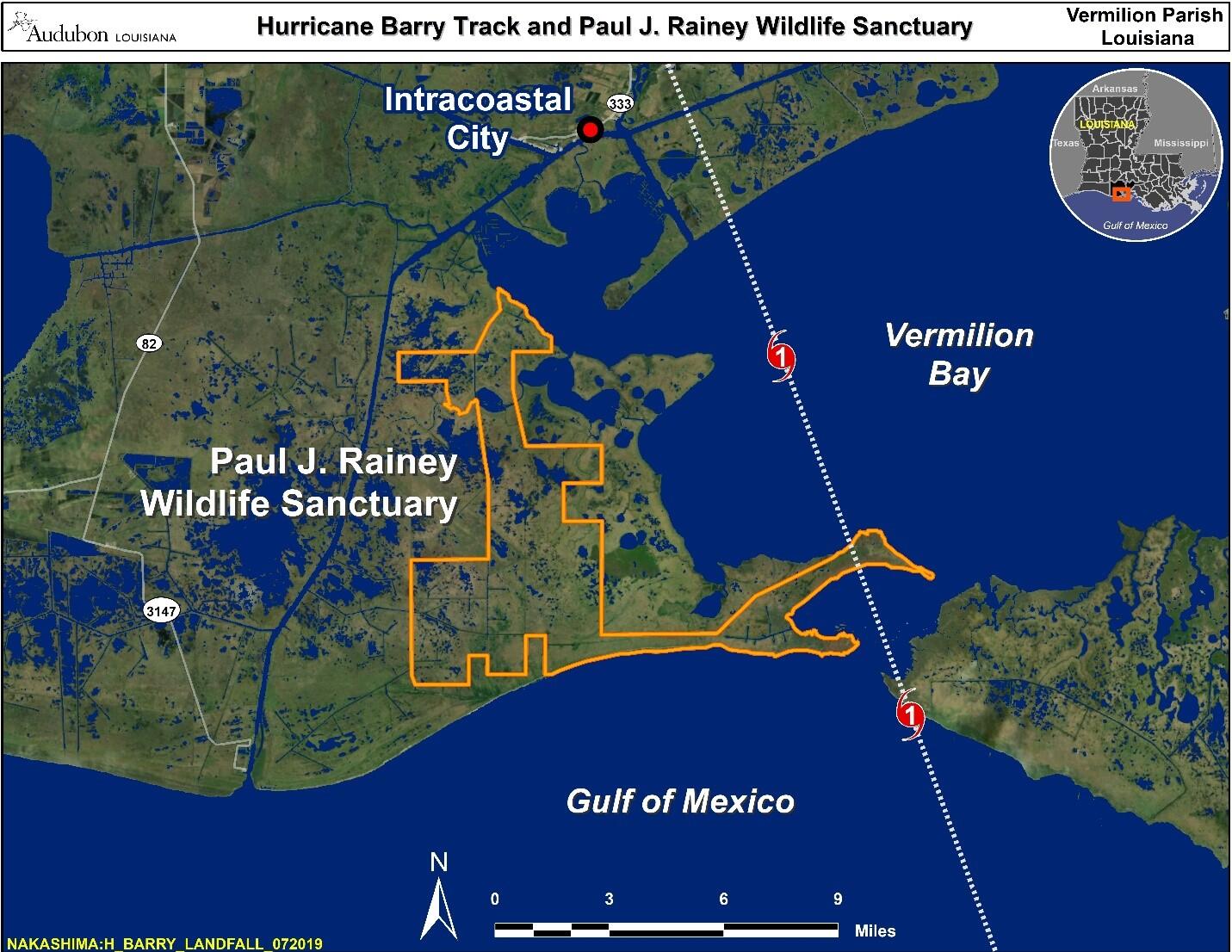
Senior Sanctuary Manager, Timmy Vincent, who lives on-site, evacuated north for the storm, but the Rainey Headquarters weather station recorded the storm’s passing. North winds in advance of the storm kept water levels low by pushing it offshore until the center of circulation skirted past on Saturday afternoon. The highest winds occurred Saturday evening, sustained at 53 mph with gusts reaching 69 mph. Effects of the storm continued but diminished through Sunday and Monday hours.
The storm pushed water 2.5 feet above normal levels, fortunately not high enough to inundate the Rainey Headquarters building. Had the storm moved just 10 miles west, the tide-pushing winds from the south would have inundated the Sanctuary for three days instead of one, and the storm surge, pulled higher by a full moon and with nowhere to go because of already flooded rivers, could have been terribly devastating to the property and wildlife. Sadly, this likely happened on Marsh Island just to our east, where large colonies of Black Skimmers have nested in recent years.

Timmy returned to the property as soon as conditions allowed on Monday, July 15, to find water levels still higher than normal but no water in any of the buildings, and debris and mud throughout the grounds.
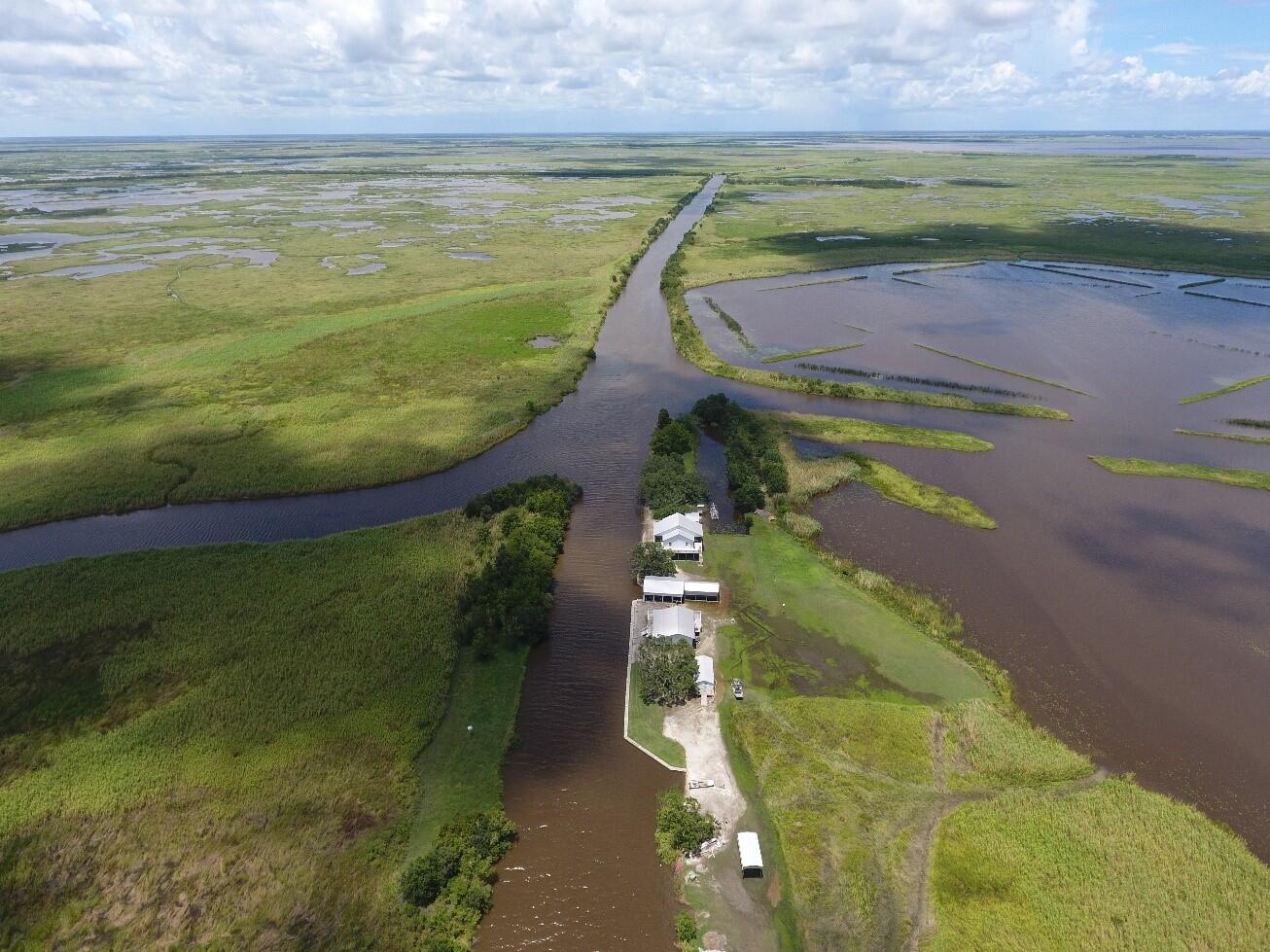
Relieved that the sanctuary buildings were spared, we were eager to learn what impact the storm had on recent restoration efforts in the marshes west of the Rainey Headquarters. Four days after the storm, we were pleased to discover that the marsh was green and healthy. My early career working with hurricane impacts on Louisiana coastal marshes had shown this was not always the case. In fact, Hurricanes Rita (2005) and Ike (2008) ripped out large areas of these marshes, thus the reason for these new restoration projects.
Terraces
Just three months prior to the storm, we constructed 14 terraces in open water that once was solid marsh to provide a buffer against wind and waves. Constructed at various heights from 3 to 6 feet, these terraces also serve to provide higher habitat in this predominantly flat landscape. The south-facing slope of each terrace had been battered by storm waves, which removed fine sediments, but the integrity of the terraces held. A line of debris on the south side marked the height of water for those that were not overtopped. Because the terraces absorbed the storm energy, the marsh to the north showed no sign of storm impact. Success! Marsh clumps ripped away from unprotected marsh elsewhere were deposited on the sides of the taller terraces and on top of others, which, as a silver lining, may propagate and further strengthen the terraces (Figure 4).

Prior to Barry, three of the newly created terraces hosted small colonies of nesting Least Terns. This was a source of great excitement for us, but now a source of great trepidation as we worried for their survival. The very first terrace we visited confirmed our worst fear. The 4-foot terrace had been completely overwashed. There were a handful of adults morosely hanging about, but I could find no evidence of nests or chicks that were there just days before. Therefore, when we spotted two chicks running about on the other two taller terraces, we were ecstatic that some had survived!
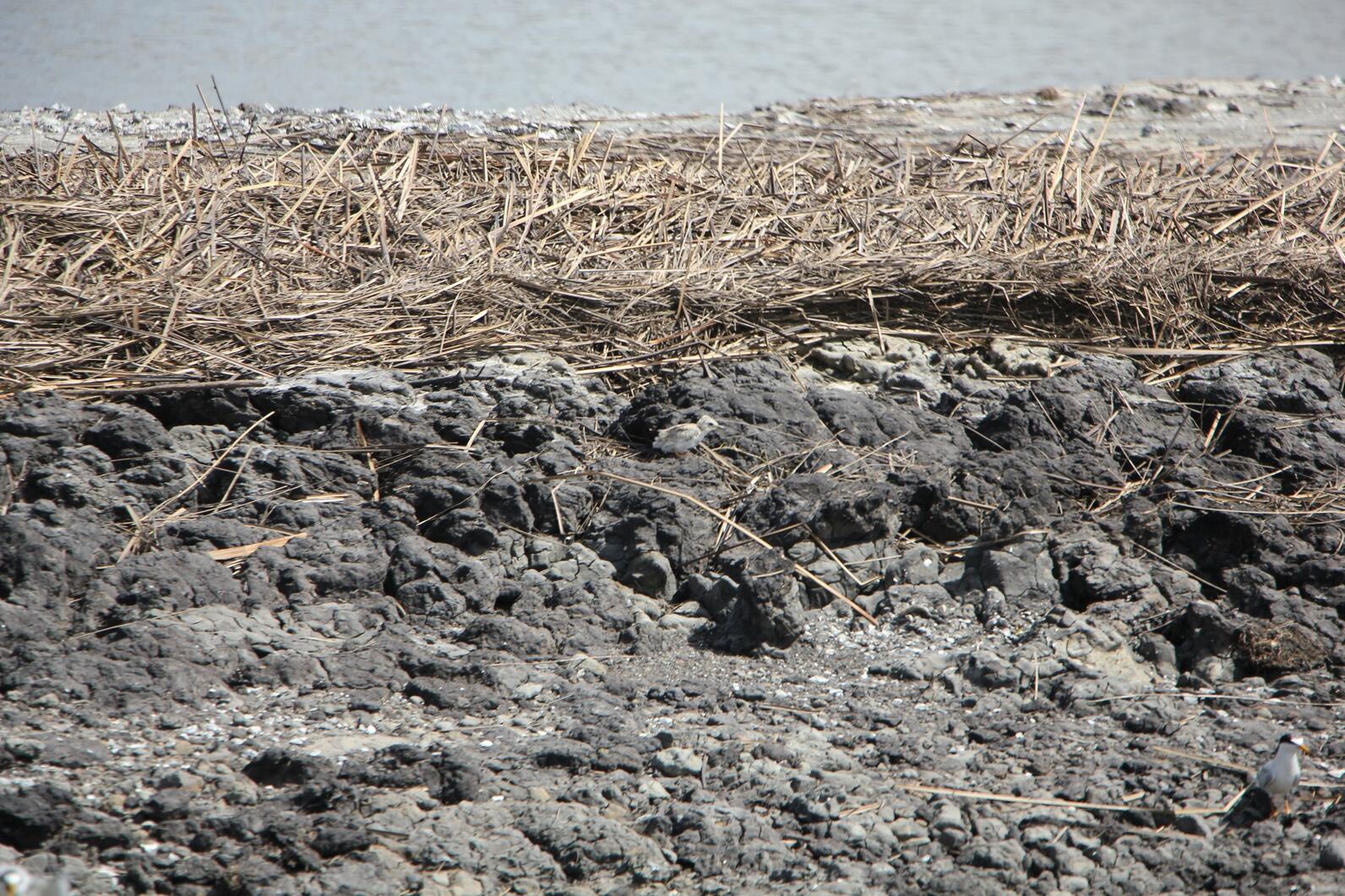


Marsh Restoration
After touring the terraces, we headed toward the northeast corner of Deep Lake Water Management Unit to inspect an older marsh restoration project. Nine years ago, funded by TogetherGreen and the Walton Family Foundation, we began an innovative initiative to explore small-scale marsh restoration by a custom-built mini-dredge. In 2015, through a partnership with Bertucci Corporation funded by the National Fish and Wildlife Foundation, we were able to contract a larger small-dredge, the Amphibex 400, to fill the remainder of our permitted area. The result was that a 16-acre hurricane-created pond filled to just above marsh level self-vegetated 11 acres. The surrounding marsh benefitted from nutrient flow-through, and the marsh was finally added to the prescribed burn rotation six months ago. We had hoped that all of these efforts increased the resiliency of this marsh, and were rewarded when no storm impact could be found other than high, muddy waters that will soon nourish the area (Figure 7 & 8).


Belle Isle Lake
The last area assessed was Belle Isle Lake, which is located just to the east of the Rainey Headquarters. Roughly 300 acres, it is connected to Fearman Lake and Vermilion Bay to the east through One-Mile Bayou, and to the west through Belle Isle Bayou and Main Canal. Marsh terraces were constructed in 2004 as part of mitigation for oil & gas activities and have been making mudflat ever since. Just last year, the state added it to their coastal vegetation program and planted the mudflats with bullwhip, shown as the dark vegetation in the following figure. A strong storm surge could have easily removed any of the mudflat or marsh, but no edge erosion or marsh lifting was detected. The Rainey Headquarters ground was covered by an inch layer of mud which may have been stirred up from the lake bottom, but submerged and emergent vegetation did not appear affected (Figure 9).
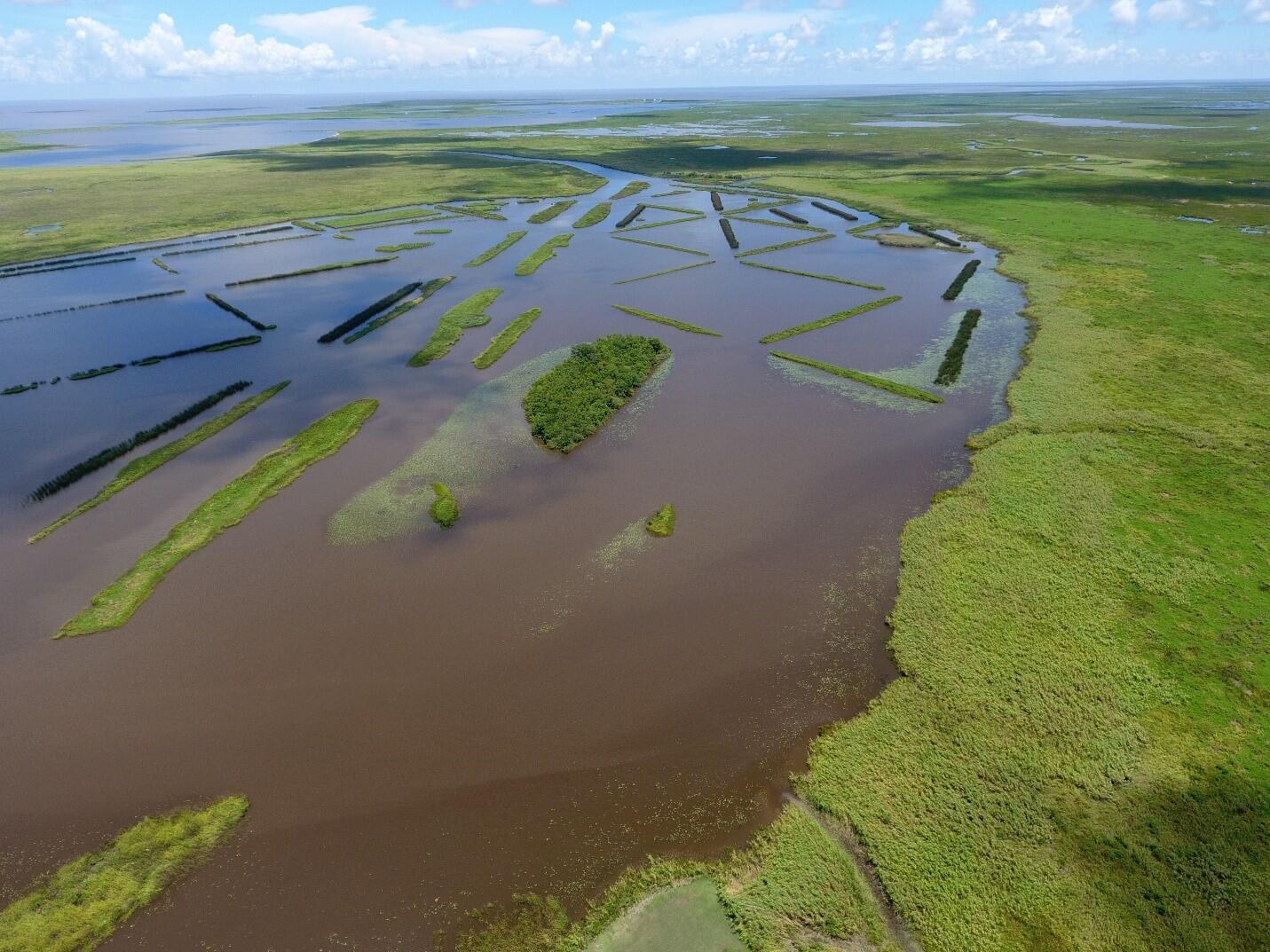
Tropical systems are an integral part of the south Louisiana ecology, and marshes and wildlife are resilient when appropriate conditions are maintained. Not much can be done about the impact of a Category 5 storm but pick up the pieces and heal what you can. However, Barry was a test of our current efforts and an indication that techniques like these can reduce storm impact. With help from partners and concerned citizens, Audubon continues to work diligently to make the Rainey Sanctuary as healthy and resilient as possible by implementing innovative ideas to restore past damage and reduce impacts of the expected increases in storm activity.
Donate to Audubon Delta's Work
Help secure the future for birds at risk from climate change, habitat loss and other threats. Your support will power our science, education, advocacy and on-the-ground conservation efforts.


